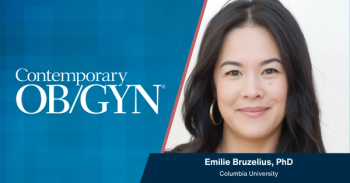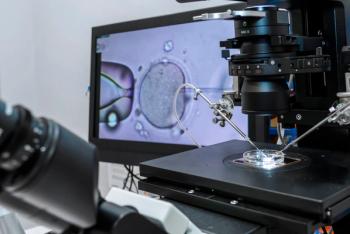
SGS 46th Annual Scientific Meeting highlights
The Society of Gynecologic Surgeons (SGS) held its 46th Annual Scientific Meeting virtually in July, in much the same way that all other associations are holding meetings or conferences these days.
Contemporary OB/GYN’s Deputy Editor Jon I. Einarsson, MD, MPH, was honored as Distinguished Surgeon by the society for his contributions to the field of gynecologic surgery — clinically and/or through research and innovation.
In his current role, Einarsson serves as the chief of the Division of Minimally Invasive Gynecology at Brigham and Women’s Hospital in Boston. His clinical interests include cervical insufficiency/incompetence, endometriosis, fibroids, laparoscopic surgery, LGBTQ health, and prolapse.
Senior Editor Angie DeRosa and Associate Editor Lindsey Carr sat down with Einarsson to discuss highlights from the scientific meeting. Einarsson gives his take in this video interview, including that surgeries are getting back to a normal schedule as the medical world works through COVID-19.
“All of our patients are getting tested and so on, but we’re back to a fairly normal schedule now,” he reports.
One of the presentations he highlighted was based on a multicenter randomized clinical trial of permanent versus delayed-absorbable monofilament suture for vaginal graft attachment during minimally invasive total hysterectomy and sacrocolpopexy.1
According to PubMed, the objective of the study was to compare mesh and permanent suture exposure rates in the first year after minimally invasive total hysterectomy and sacrocolpopexy with a light-weight polypropylene mesh using permanent or delayed absorbable sutures.
Across five centers in the United States, women were randomized to permanent or delayed absorbable suture for vaginal attachment of a Y-mesh during hysterectomy and sacrocolpopexy for stage II prolapse and worse. The primary outcome was mesh or permanent suture exposure in the first year after surgery.
The secondary outcome was to compare a composite measure for success defined as leading edge of prolapse not beyond the hymen and apex not descended more than one third vaginal length, and no subjective bulge and no prolapse retreatment.
Patients completed a pelvic examination including the pelvic organ prolapse quantification system and questionnaires at baseline, 6 weeks, and 1-year post-surgery. A sample size of 80 per group was planned to compare the rate of mesh or permanent suture exposure in the permanent compared with delayed absorbable groups. From April 2015 to May 2019, 204 patients (n=102 permanent; n=102 delayed absorbable) were randomized.
One hundred ninety-eight women had follow-up data, with 182 (93%) completing 1-year follow-up: 95 of 99 (96%) permanent, 87 of 101 (86%) delayed absorbable. The total rate of mesh or permanent suture exposure was 12 of 198 (6.1%): 5.1% for permanent compared with 7.0% for delayed absorbable (risk ratio 0.73, 95% CI 0.24-2.22).
The majority (9/12) were asymptomatic. Composite success was 93% for permanent compared with 95% for delayed absorbable suture, P=.43). Six (3.0%) women had a serious adverse event.1
The trial essentially showed that there was no difference in outcomes between the two groups, which Einarsson found interesting because traditionally permanent sutures have been used for this procedure.
“It appears probably that the mesh just gets so incorporated into the tissues that using the permanent suture is not necessary, and that has some advantages because if those sutures get eroded through the vagina you can tell the patient, then, if it’s delayed absorbable, it’s just going to go away on its own, as opposed to a permanent suture you may have to go and remove it,” he explains.
“In our practice, we converted to delayed absorbable sutures maybe 3 or 4 years ago and we haven’t noticed any difference in our clinical outcomes, so it was reassuring I guess for us to see that there wasn’t a difference in this randomized trial. There had been other studies, but they were cohort studies or retrospective studies, so I thought that was pretty interesting.”
Watch the full video interview to hear all that Einarsson has to say about this topic and other findings presented during this scientific meeting.
__
Reference
- Matthews CA, Geller EJ, Henley BR, et al. Permanent Compared With Absorbable Suture for Vaginal Mesh Fixation During Total Hysterectomy and Sacrocolpopexy: A Randomized Controlled Trial. Obstet Gynecol. 2020;136(2):355-364. doi:10.1097/AOG.000000000000388
Newsletter
Get the latest clinical updates, case studies, and expert commentary in obstetric and gynecologic care. Sign up now to stay informed.
















